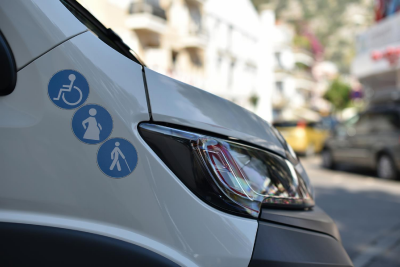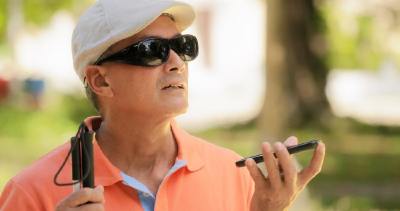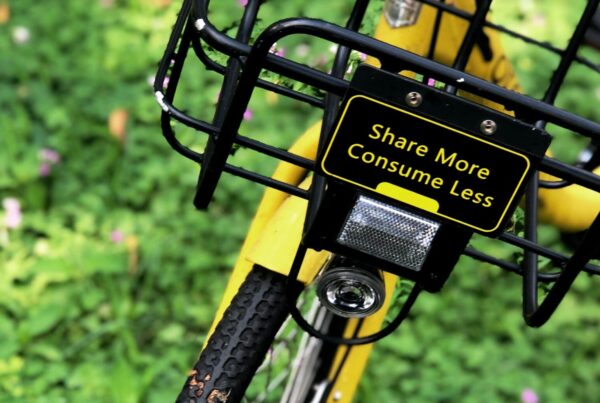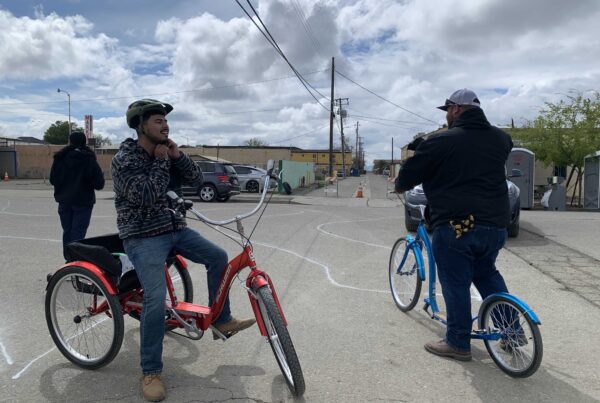Sponsored Blog Post by:
There is no question that technology makes life easier – for everyone. And let’s not forget the “coolness” factor associated with being one of the first to own the latest trendy tech gadget. Since the early 2000s, there have been countless technological breakthroughs and many with substantial benefits for their users. Just think about life without a smartphone. It’s impossible, right? “Thanks, technology!”
Open Sesame
Now take it one step further and examine how technology impacts individuals with special needs. In a nutshell, assistive, adaptive, and other technologies, greatly help people with disabilities achieve their goals. People from a wide range of ages and abilities count on these tools to make the world around them more accessible and comfortable. And there is no denying that people with disabilities achieve greater self-reliance if they can use tech to participate in their lives, the way they want.
For the seemingly simple things that most people take for granted like; communicating, hearing, seeing, playing, eating, reading, dressing, and being mobile, technology is the magical gateway to life’s little treasures, like confidence, freedom, and independence. There are so many ways that technology enables accessibility, but one of the great services impacted by technology is transportation.
 Paratransit is a special transportation service for people with disabilities, who are unable to use fixed-route, public transportation for some or all their mobility needs. And paratransit service has become an essential element of public transit across North America. In the USA, paratransit has largely been defined by criteria established under the Americans with Disabilities Act of 1990 (ADA), with regulations endorsed by the Federal Transit Administration (FTA). Under this law, public transit systems must provide comparable paratransit service for people with disabilities who cannot use the fixed-route transit system. Service is comparable based on the following criteria:
Paratransit is a special transportation service for people with disabilities, who are unable to use fixed-route, public transportation for some or all their mobility needs. And paratransit service has become an essential element of public transit across North America. In the USA, paratransit has largely been defined by criteria established under the Americans with Disabilities Act of 1990 (ADA), with regulations endorsed by the Federal Transit Administration (FTA). Under this law, public transit systems must provide comparable paratransit service for people with disabilities who cannot use the fixed-route transit system. Service is comparable based on the following criteria:
1. ADA paratransit services must equal fixed-route services in terms of the service area and days and hours of service.
2. Fares cannot exceed twice the fixed-route passenger fare.
3. Reservation systems should allow for next-day service; and
4. Trip purpose restrictions and capacity constraints should be eliminated.
In many cities across the country, paratransit service is door-to-door and not just curb-to-curb, as required under the ADA. Within the transportation industry, it’s widely known that paratransit customers have become some of the most vocal advocates of increasing public subsidy and support for transit services, for those who rely on them for life’s essential mobility. Paratransit advocates are always questioning which new service models and emerging technologies offer the best opportunities for people with disabilities to gain access to work, school, essential services, friends, family, civic participation, and everything else that is important to society. Paratransit advocates’ dedication to equality and inclusion, propels technology innovation and accessibility for all.
Paratransit Software
With great passenger expectations and tight government regulations, getting the service “right” is not an option for paratransit providers. That’s where technology comes in. Paratransit and ADA agencies need to be able to offer dependable service to their riders and report on every aspect of their operation. They need to streamline office work, their means of communication, their data collection techniques, and their planning and scheduling procedures, to ensure that their passengers have the experience they need and come to expect from their transit provider. To achieve these service goals, a single-source on-demand software solution is ideal, one that is flexible and intuitive, yet user-friendly and easy for transit agency employees to work with.
Geofencing and Beacons for Wayfinding
Back in 1994, Bay Area Rapid Transit (BART) and San Francisco Municipal Transit Agency partnered on a pilot project to test the effectiveness of a technology for visually impaired people, called Talking Signs™. Talking Signs included two components. There were small transmitters that transmitted pre-recorded messages, labeling items to which the transmitters could be mounted, including station entrances, escalators, stairwells, elevators, restrooms, ticket machines, and gates, and visually impaired people could carry radio receivers that were programmed to receive and play the pre-recorded messages being transmitted by Talking Signs transmitters. The technology worked well, but its success was ultimately limited by the fact that infrared technology does not work well in places with a lot of ambient light, and by the challenges of distributing receivers to customers who needed them. However, that was 1994, and very innovative for the time.
Today, electronic beacons can transmit prerecorded messages, and a smartphone user with Bluetooth capabilities and a mobile app, created to intercept and play these messages, can use the information to navigate to and from transit systems, as well as within the transit system itself. Electronic beacons are inexpensive to purchase and maintain and can be used on stationary or moving objects. Beacons can also store multiple messages, including messages in multiple languages, making it possible for one beacon to serve the mobility needs of many groups of customers.
Within the past year, agencies like the Washington Metropolitan Area Transit Authority, have been considering wayfinding technologies, in their software purchases. Given that accessing an otherwise accessible transit system is one of the largest eligibility triggers for transit, these technologies offer more than accessibility improvements for people with disabilities — they offer potential financial savings to transit agencies as well.
 Remote Assistance to Solve Wayfinding and Informational Challenges
Remote Assistance to Solve Wayfinding and Informational Challenges
For people who are sightless, the challenges of using transit are not limited to wayfinding; access to information can also be a barrier. But there are several technologies that use combinations of artificial intelligence and human assistance to address both issues.
• Seeing AI is an app by Microsoft that uses the camera of a mobile phone to capture an image which the app’s artificial intelligence then attempts to identify and, (in the case of text), to read out loud. Seeing AI is designed to read short blocks of text, to scan and read larger documents with more text, to identify colors, the availability of ambient light, denominations of an entire range of currency, and even faces. It is a better solution for the information challenge but to the extent that it can recognize and read conventional signs, it can assist with wayfinding as well. Seeing AI is currently available for Apple devices but not for Android users. Hopefully, this will change soon.
• BeMyEyes is a mobile app that connects visually impaired people with volunteers who can simultaneously see what a blind person’s mobile phone camera sees and then provide that information to the blind person. BeMyEyes can assist with navigation, with the identification of objects, with the reading of signs, placards, and other printed information, and with the operation of ticket-vending machines and other transit technologies.
Other Accessibility-Related Technologies
Efforts to improve accessibility are not limited to technologies and businesses serving visually impaired customers. There have been other efforts to use smartphone apps to aid passengers with intellectual disabilities to ease conventional public transit by providing step-by-step directions for completing a trip, and audio and visual prompts when the customer (either on foot or on transit) reaches the next step of their journey.
Other efforts are being made to use crowdsourcing and social media to identify accessible paths of travel for people using mobility devices, and there are ongoing efforts to improve the accessibility of ridesharing services for use by people who need wheelchair-accessible vehicles. All these efforts, along with those described above, offer tremendous potential for people with disabilities to utilize public transit services more easily and with greater personal independence and dignity.
Cost-Saving Considerations
While technology increases accessibility and makes life easier for all, cost is always a factor. For example, paratransit agencies can charge their passengers no more than two times the cost of a regular fare, however, the cost of each trip to a paratransit agency is more like six or seven times the cost of a traditional fixed-route fare. And government subsidies only go so far to help. For this reason, trends in providing paratransit service now include TNCs (transportation networking companies), utilizing shared ride services such as Lyft, to supplement service. The average cost to an agency of using these providers (as well as traditional taxi services), is often about half the typical cost. Additionally, many transit systems are now adopting the use of Trip Broker software, which allows the reservationist to see the projected cost of a trip at booking, then choose a provider, based on that cost. This can eliminate expensive trips such as individual late-night van trips from a traditional contract provider, and it can help lower overall costs when used effectively.
The Future is Accessible and Equitable
We’ve come a long way, in so many ways! Tech solutions are evolving at a rapid pace to make life easier for everyone, especially those with special needs, and requirements. And since the onset of the pandemic, on-demand paratransit, and other life-changing tech solutions, have become the safe and convenient road for greater equity and accessibility for all.
Sources:
https://knowledgehub.apta.com/resource/trapeze-group-mobility-on-demand-the-next-frontier-for-paratransit?utm_source=apta&utm_medium=cast&utm_campaign=Recap061521https://paulcomfort.org/2017/12/02/providing-powerful-paratransit/




